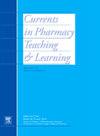评估影响员工倦怠的工作场所因素,并确定支持员工福祉的建议
IF 1.4
Q3 EDUCATION, SCIENTIFIC DISCIPLINES
引用次数: 0
摘要
职业倦怠和幸福感之前在药剂师、教师和学生中进行过研究;然而,缺乏针对员工的研究。研究表明,大多数高等教育工作者经历过职业倦怠;然而,工作场所因素对这一现象的影响还没有得到很好的理解。本研究旨在探讨影响药师职业倦怠的因素,并提出改善药师职业倦怠的建议。方法邀请专职工作人员参与本探索性研究。焦点小组按职位类型(即行政人员、支持人员、研究人员)进行分组,并采用半结构化访谈格式。参与者被要求讨论影响他们职业倦怠和幸福感的工作场所因素,以及改善员工幸福感的策略。结果27名工作人员被分为5个焦点组:11名行政人员分为2个焦点组,13名后勤人员分为2个焦点组,3名研究人员分为1个焦点组。被确定为影响员工倦怠的主题包括感觉被重视、工作场所关系、工作环境要素(如自主/信任、灵活性)和资源。行政和支持人员强调混合工作和学生互动是影响他们幸福感的因素,而研究人员强调主管和同事关系。影响员工职业倦怠的因素包括高等教育文化(如等级制度)和不切实际的期望。促进工作人员福利的建议对每一组都是独特的。结论研究人员确定了影响药学教育中员工职业倦怠和幸福感的几个工作场所因素。这些发现推动了国家和国际倡议,重点关注健康和减少倦怠,为学院提供了支持员工健康的具体领域和战略。本文章由计算机程序翻译,如有差异,请以英文原文为准。
Assessing workplace factors that influence staff burnout and identifying recommendations to support staff well-being
Introduction
Burnout and well-being have been previously studied in pharmacists, faculty, and students; yet, studies focused on staff are lacking. Research indicates most higher education staff experience burnout; however, workplace factors contributing to this are not well understood. This study aimed to identify factors influencing staff burnout and identify recommendations to improve staff well-being in pharmacy education.
Methods
Full-time staff were invited to participate in this exploratory study. Focus groups were divided by position type (ie, Administrative Staff, Support Staff, Research Staff) and used a semi-structured interview format. Participants were prompted to discuss workplace factors contributing to their burnout and well-being as well as strategies to improve staff well-being.
Results
Twenty-seven staff participated in five focus groups: 11 Administrative Staff in two focus groups, 13 Support Staff in two focus groups, and three Research Staff in one focus group. Themes identified as influencing staff burnout included feeling valued, workplace relationships, elements of the working environment (eg, autonomy/trust, flexibility), and resources. Administrative and Support Staff emphasized hybrid work and student interaction as factors influencing their well-being, while Research Staff highlighted supervisor and coworker relationships. Factors influencing staff burnout included higher education culture (eg, hierarchies) and unrealistic expectations. Recommendations to foster staff well-being were unique for each group.
Conclusions
Participants identified several workplace factors that contribute to staff burnout and well-being in pharmacy education. These findings advance national and international initiatives focused on prioritizing wellness and reducing burnout, informing the academy of specific areas and strategies to support staff well-being.
求助全文
通过发布文献求助,成功后即可免费获取论文全文。
去求助
来源期刊

Currents in Pharmacy Teaching and Learning
EDUCATION, SCIENTIFIC DISCIPLINES-
CiteScore
2.10
自引率
16.70%
发文量
192
 求助内容:
求助内容: 应助结果提醒方式:
应助结果提醒方式:


